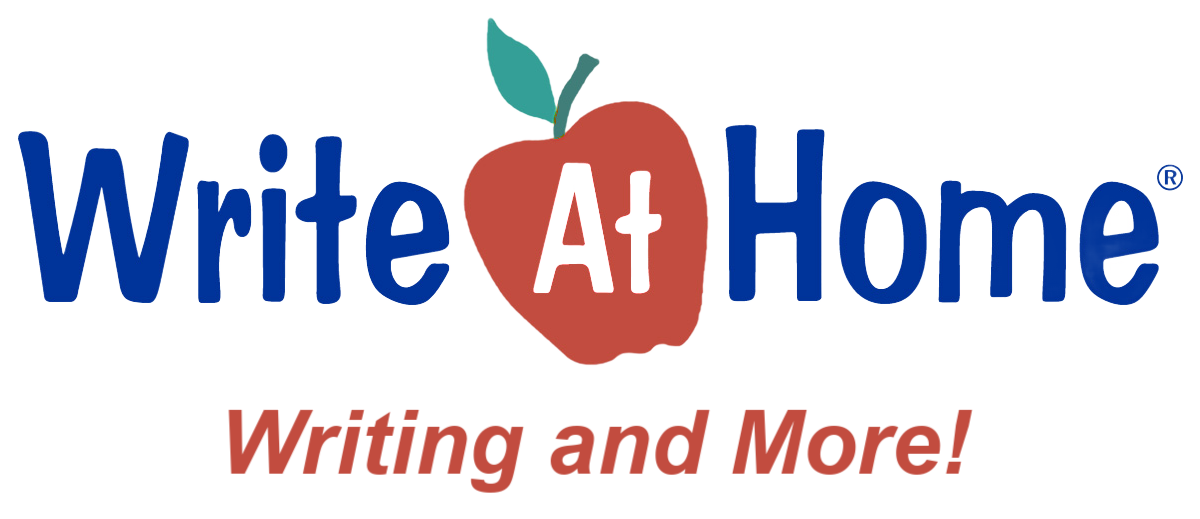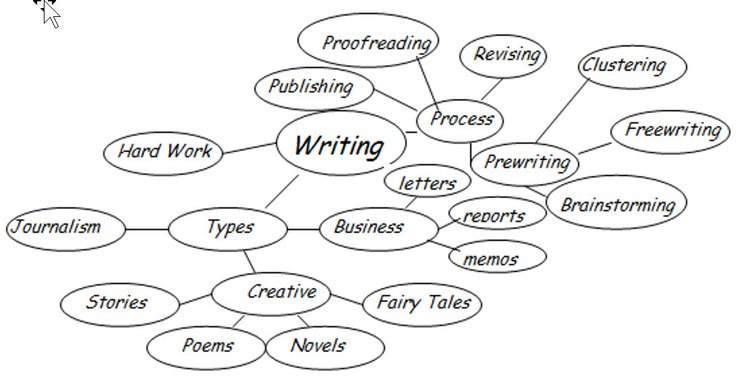The Writing Process 1
We say this all the time—writing is difficult. There’s no avoiding the grueling brain work of writing, but there are some techniques you can employ to make it as easy as possible. Over the next few weeks we will take a close look at the process of writing, breaking the complex task of writing into manageable steps.
The danger in performing any writing task is to fix all your attention on the final product—the paper that is due. You want to end up with a good paper, of course, but the best way to get there is by taking one step at a time. For this reason, at WriteAtHome, we emphasize writing as a process—a process that takes time to finish. Your writing assignment this week will be a first draft that you will get to revise and improve later.
Even professional writers understand the importance of the process. Most writers write and rewrite many times before they are ready to submit their work for publication. Even the world’s greatest writers didn’t wake up one morning with the text ofa classic novel etched in their heads. The work of Shakespeare, Milton, Dickens, and Hemingway came by hard work, withlots of crumpled sheets filling the wastebasket and empty ink bottles scattered about the room.
We will break down the writing process into five steps and explore them over the next several lessons.
Prewriting: Getting it Together
The first step in the writing process might not involve any writing at all. Prewriting includes everything you do to prepare for writing. Often prewriting consists simply of thinking about what to write, but it might include activities like conducting an interview, doing research, surfing the web, studying literature, or asking advice. It might involve creating an outline or putting note cards in order. For less confident writers, it may involve fasting and prayer!
Most people write better if they take their time and prepare for it. Athletes usually stretch and warm up before hitting the field for competition. Muscles need this kind of preparation or they are prone to injury. The brain is a muscle too. If you don’t warm it up sufficiently before the strenuous thinking writing demands you might end up with a very painful brain cramp.
Okay, that’s not likely, but wise prewriting really can help relieve the tension that can result from staring at a blank sheet of paper with a deadline approaching.
Prewriting Techniques
There’s really no limit to the number of ways you can prepare to write. Much of it depends on what kind of writing assignment you’ve been given. If you are going to make a private journal entry, you might just find a quiet place to collect your thoughts before starting. If you need to write a report on zebras, you might visit the library or a zoo and begin gathering information. If you are writing a story, you might scribble some notes or a rough outline. All of these activities are ways to prepare yourself for writing. The following are some techniques for getting your ideas together and your creativity in gear.
Brainstorming
Most people are familiar with brainstorming. It’s a way of emptying your brain of ideas without stopping to assess them first. During brainstorming, no idea is a bad idea. Often it’s difficult to start a writing project, not because we can’t think of a topic, but because we can’t decide which of the dozens of ideas in our head we like best. Brainstorming is a way to list all the possible ideas so that we can take a look later and make some decisions.
What does brainstorming look like? There’s no real rule to it, but generally it’s a messy process. As long as you get your idea on the page you’ve succeeded. If you had to write about a memory, you might want to just start jotting down things you remember and whatever brief ideas that come to mind about it. You can brainstorm on a keyboard or with pen and paper—whatever you prefer. Here’s an example:
Falling out of the tree (2nd grade?)
Getting Waldo (my first puppy—Christmas)
First trip to dentist
Funny one: my neighborhood “talent show”
Grandma’s house
Tripping in McDonald’s
Getting lost in the mall (guard was so nice!)
Freewriting
Freewriting is another pre-writing technique that can be fun and useful when you are not sure where to begin. It works best when you already have a topic in mind, but are not sure which direction to go with it.
What is freewriting? It’s writing with only one rule: Don’t stop.
When you freewrite, you start with an idea or a topic (like George Washington or friendship) and just start writing about it. Don’t think too hard—just let the ideas flow. Don’t worry about spelling or grammar or punctuation or paragraphs. Just like in brainstorming, resist the urge to evaluate your ideas or correct mistakes. Simply get them out on the paper. You can sort through it all later.
It’s usually best to set a time or a space limit. Give yourself three minutes and don’t stop clicking keys or moving your pen until the time is up. Or you can keep writing until you fill up two whole pages.
You’ll end up with a lot of dumb stuff, but most of the time you’ll also be able to find a direction for your paper or some good ideas to include. Freewriting looks different for everybody, but here’s an example:
George Washington
George Washington first president white wig always seems very serious. He’s on the dollar bill and was the first president his wife was Martha I think and he was supposed to be very honest I remember the story about the cherry tree chopping and his dad didn’t punish him because he told the truth (I cannot tell a lie) I wonder if that story is true I sure have never met anyone who could NEVER tell a lie—including me, but I guess it’s possible, I’ll have to look it up to see if it’s true and he also crossed the Delaware and through coins in a river or something and he was a general in the revolutionary war and oh yeah, I remember he was at Valley Forge I remember visiting Valley Forge as a kid and you always see George Washington slept here signs, and I think he was tall and had wooden teeth.
Clustering
Sometimes people call this technique mapping or webbing. Just like in brainstorming and freewriting, the idea is to loosen up the brain muscles and get ideas down on the page.
Clustering should be done on paper with a pen or pencil. It’s tricky to do it on a computer unless you have a program designed for it.
To begin a cluster, put the topic or main idea in the center of the page and circle it. Then just start thinking of ideas that relate to that idea, circle them and connect them to the original circle. Keep going until you fill the page with bubbles containing related ideas. If you try hard enough, you could keep doing this for a long time.
Here’s a small example:
Give these three techniques a try. They are fun and easy and good ways to prepare yourself for the process of writing.


